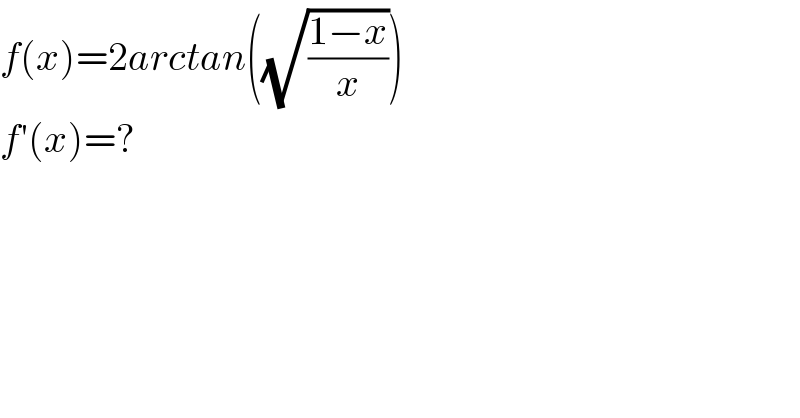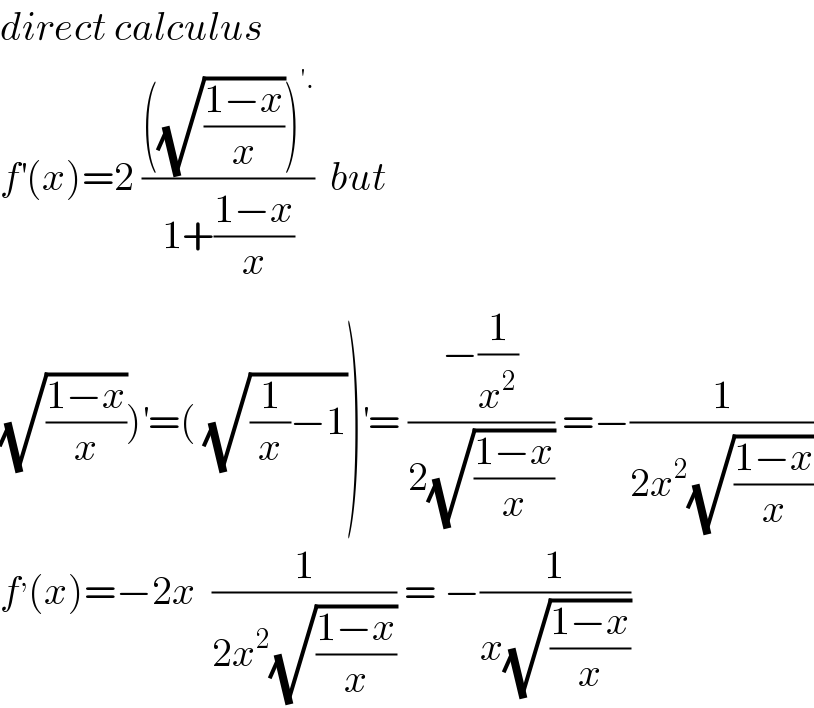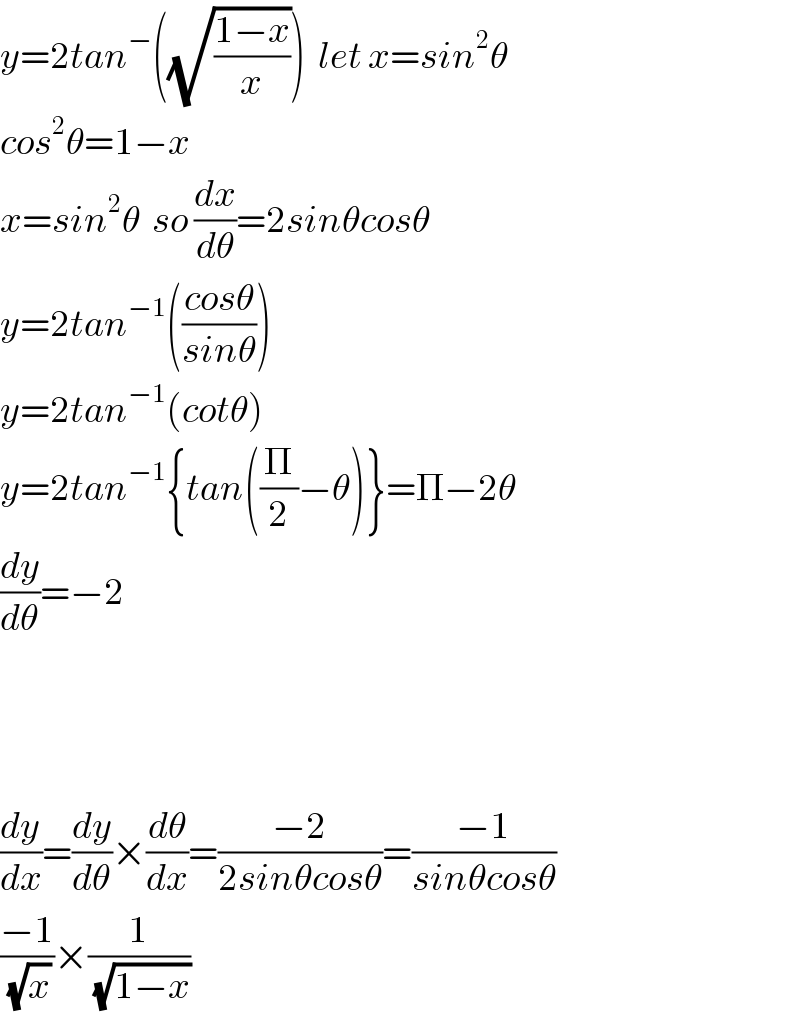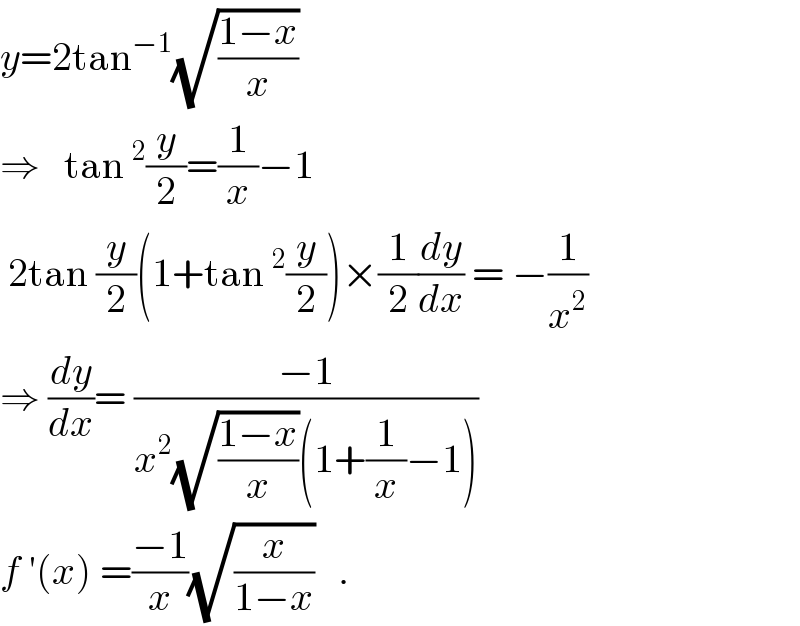
Question and Answers Forum
Question Number 39949 by zesearho last updated on 13/Jul/18

Commented by abdo mathsup 649 cc last updated on 13/Jul/18

Answered by tanmay.chaudhury50@gmail.com last updated on 13/Jul/18

Answered by ajfour last updated on 13/Jul/18

